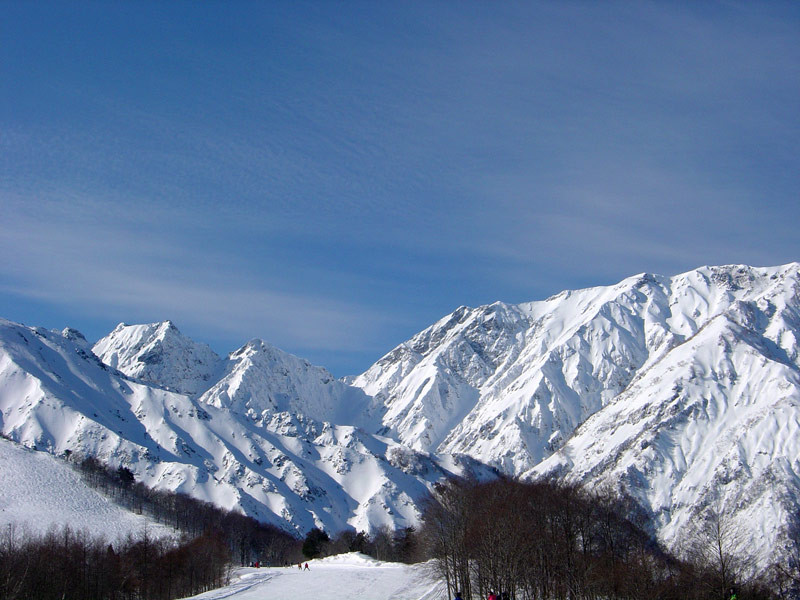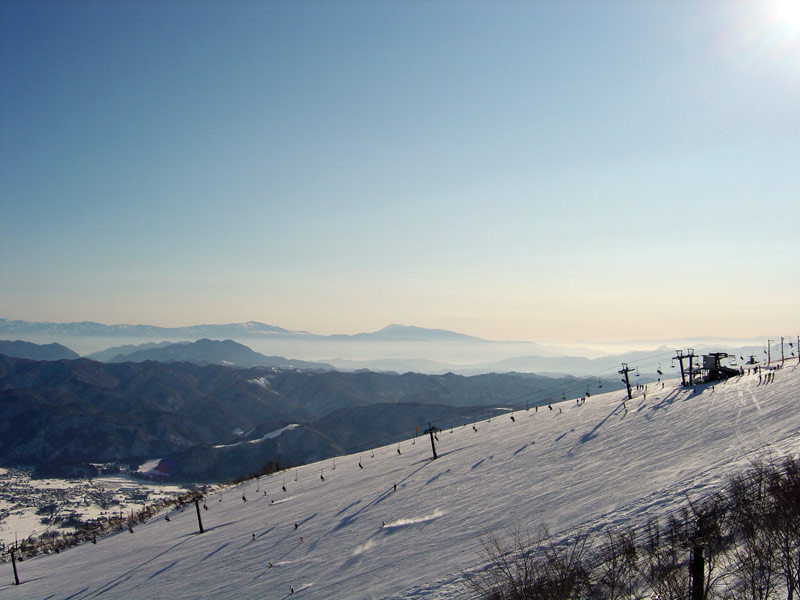New Year on the Slopes
Four days of skiing in Nagano’s Hakuba region
It was 7:00 in the morning when we all piled onto a chartered bus on the west side of Shinjuku Station—about 50 gaijin and a smattering Japanese English-speakers, all of us off to spend four days of our long winter break hurling ourselves down the Japan Alps in Nagano as many times as our bodies could handle.
Five hours and three rest stops later, we arrived in Hakuba, one of Japan’s premier ski areas, and in short order I was hiking up to the nearest slopes with three Norwegians I’d met on the bus. Two were snowboarders, one had fat powder skis, and I was on a mission to prove that my Head snowblades could take whatever Nagano could throw at them.
We found ourselves in Happo-Oné, host of the ski jump and alpine ski events during the 1998 Nagano Winter Olympics. The top of the mountain was closed due to high winds, and we started to feel foolish for buying half-day passes instead of paying by the run as we slogged our way across the crowded lower slopes. But when we finally made it to the north side of the resort, we discovered not only one of the fastest, emptiest lifts in the area, but also one of Happo-Oné’s greatest features: The signs posted at the edges of the runs simply said, ‘Ski off-course at your own risk.’
We quickly found a valley of untouched shoulder-depth powder and lost ourselves in it. Our first major off-piste adventure ended with a pathetic low-speed leap over a small creek followed by an awkward climb-out over a concrete dam, but even the gouges in my bases were worth it. As we reached the flat ski-out at the bottom, however, my new Norwegian friends all scooted off effortlessly, while I learned that in deep powder flats, snowblades function like concrete galoshes.
Our second day was spent at Hakuba Goryu & Hakuba 47, where atrocious ten-meter visibility blessed us with waist-deep powder in the middle of every run. It was like wading downhill, and after an hour and a half up and down the empty lifts at the top, we felt like we’d put in a day. High winds forced the entire mountain to close in the afternoon, and after finally getting off our stop-starting and swaying lift, we had to wait over an hour in line for a bus back to town.
On the third day the heavens revealed themselves at last and we finally saw the top of Happo-Oné. We celebrated by repeatedly skirting an off-piste ridge that intersected with a satisfying series of mid-level runs. The mix-and-match course always ended in frustration, however, as it concluded at what must be the most poorly-managed double chair in Japan. Japanese skiers don’t like sitting with people they don’t know, and most lifts don’t have singles lines, so regardless of how crowded the lifts are, you will inevitably see two consecutive chairs go up with only one person on each.
On the last day the snow was getting washed out at the bottom, so it was a good point at which to say goodbye. Refusing to submit to our compounding states of illness and physical exhaustion, we made sure to finish on a nice, powdery off-pister before facing the five-hour trip back to Tokyo.
There are regular buses leaving for Hakuba from the west exit of Shinjuku Station (¥4700). Adult lift passes are ¥4600 at Happo-Oné, and ¥4800 at Hakuba Goryu & Hakuba 47. My trip was organized through a group called Tokyo Gaijins, which sets up regular trips to ski areas around Tokyo throughout the ski season.
Information:
Published February 2009. Photos © 2008 Michael Kanert.


